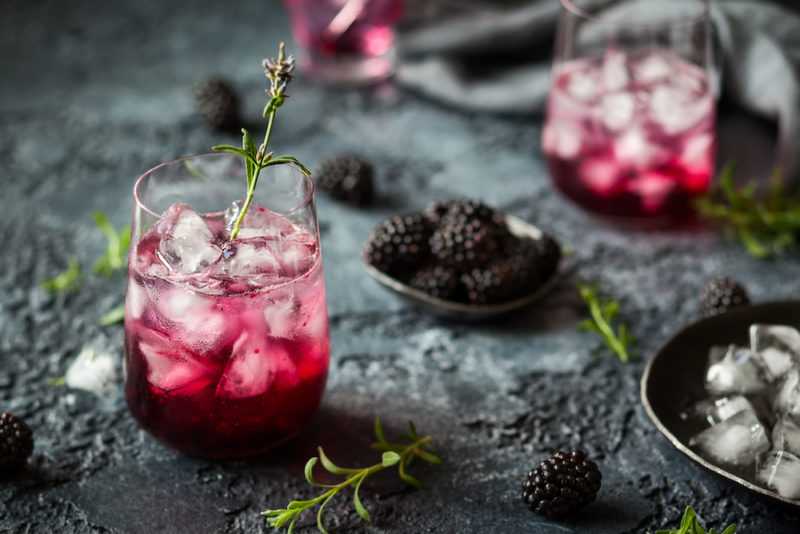No matter how many times a doctor tells you that you need to eat healthier, it does not make things any easier, right? It’s a shame science hasn’t figured out how to make Oreos and pizza the pinnacles of nutrition.
But until then, you can improve your health simply, by integrating more greens into your life. Before you groan and complain about the texture of steamed spinach, bare with us because Pure Planet’s greens are delicious and E A S Y to eat – no cooking necessary.
Read on to hear just how cool our Best of Greens blend, filled with the finest greens from the land and the sea, can be for your health goals!
Organic Cereal Grasses
First on our list is organic cereal grasses, which are made up of:
- organic wheatgrass
- organic barley grass
- organic oat grass
You might have seen some of these grasses pressed into juice in small shot cups. And for good reason, because, they boast a ton of nutrients and antioxidants.
Feeling groggy or hungover? One shot can boost you back into your vibrant life because of all the vitamins and minerals.
Some of these include:
- Vitamin A, C and E
- Iron
- Magnesium
- Calcium
- Amino Acids
Besides the obvious bonus of weight loss support, these grains can support blood sugar regulation and help reduce obesity!
Alfalfa
It’s not just the name of everyone’s favorite Little Rascals’ characters (NETFLIX IT!), it’s one of our favorite veggies! Like many of its green brethren, this forage legume contains an array of vitamins, minerals and proteins.
But guess what? In addition to naturally supplying these nutrients, alfalfa is also low in calories. Yes!
This herb has been traditionally been used to help improve metabolic health and support antioxidant levels.
And what’s more?
There are studies (a few, admittedly) that tie consumption to lower cholesterol support!
Its juice can easily be added to other juices and mixes, which is why we use it in our Best of Greens.
So, what else is in Best of Greens?
Cruciferous Vegetable Blend
Okay…you might be thinking…what on earth does that word even mean? Simple! Cruciferous refers to plants from the Brassicaceae family. The latin name, Cruciferae, comes from their cross-like shaped flowers.
But enough of the plant-nerd talk (trust us, we could keep going), these veggies are super good for you.
With a low-calorie count, these greens can help provide vitamin support as well. They can also be a good source of fiber, but you probably already knew that.
What you might not know is that these plants are also good sources of folates. Folic acid is a form of vitamin B-9 and helps support significant body functions.
According to the Association of UK Dietitians, this acid plays a role in:
- formation of red blood cells
- maintaining cell life
There is also evidence that consumption may lend support to those who suffer from age-related hearing loss.
And one more awesome benefit? They contain phytonutrients that can help promote the body’s response to inflammation.
Here are some of our favorites (organic, of course):
- broccoli
- cabbage
- parsley
- kale
- dandelion greens
So far, these land greens seem sufficient enough, so why bother with the greens from the sea?
Keep scrolling!
Organic Algae
Who lives in a pineapple under the sea? Well, SpongeBob, but he’s fictional.
There’s an abundance of REAL life under the sea, besides fish and sea creatures!
Let us introduce you to one of our favorite plants: ALGAE! Okay, wipe that look off your face, because it’s really good for you.
First things first: yes, you should be very safe about where you get edible algae, which is why we are very careful about where and how we harvest ours. Safe practices and healthy living are our goals and that’s how we’ve being stay pure and true since ’92.
So, what can algae do for you?
Just like greens, algae can supply potent doses of vitamins, minerals (and trace minerals) and antioxidants. Their active phytonutrients can help support weight loss, heart health and the body’s response to inflammation.
Two of our favorites are spirulina and chlorella.
Spirulina is considered to be a super-nutrient, providing support for such things as blood pressure, weight loss and cleansing.
Plus, it can help provide allergy relief and help alkalize the body.
Chlorella is similar. Interestingly enough, this plant cannot be digested as it naturally appears, so it needs to be grounded into powder or in capsule form. We make sure to do this while maintaining optimal bioavailability and safety.
Like spirulina, this algae can help cleanse the body of metals. Its antioxidants can also help boost the immune system, promote energy and support healthy cholesterol levels.
What other marine plants can be beneficial?
Organic Sea Vegetables
So maybe there aren’t actual pineapples under the sea, but there are cool veggies, like kelp and dulse.
Grown under water, these sea plants can help support a healthy thyroid, with a good source of iodine.
You may be more familiar with kelp, as you might have seen it wash up on shore or drift around at your local beach. Don’t consume that kelp though, because it may have more bacteria and germs from the local environment. You must always ensure your kelp supplement is safely-sourced and clean to consume.
When it is safe, kelp can:
- Help prevent bone loss with a strong source of vitamin K
- Help the body react to inflammation with antioxidants
- Help maintain healthy blood glucose levels and aid with other blood-related symptoms
You may not have heard of dulse, but that’s why we’re here!
Instead of being packed with minerals, dulse is loaded with Omega-3 and Omega-6. These polyunsaturated fatty acids may help blood pressure and proper brain development and function.
Plus, dulse contains protein and Vitamin B-12 (normally found in meat, poultry and dairy), which make it a great asset for a vegan diet!
Get Your Green On
We love our greens and we hope you do too. Find a green blend that’s good for you at PurePlanet.com.
Sources:
It’s hard to believe we’ve already made it through half of 2018. From the release of our new Apple Cider Vinegars to our exciting giveaways on Facebook, we’ve had an exciting six months!
Even after 25+ years of serving happy customers, we’re still so delighted to meet new friends of Pure Planet.
If you have yet to experience us, let us share how we stand by our motto, “Pure and True, Since ’92.”
While many health-conscious folks are hip to the importance of the USDA Organic seal that stamps our products and other brand’s as well, does everyone know what it actually means?
If you’ve ever wondered what a company must do to get their product(s) certified, you’ve come to the right place.
Let’s chat “USDA Organic” and the other ways we ensure that our superfoods-fans get the finest of quality products.
Organic Certification
When you see the word “organic,” what do you think?
Most people think of “natural” when they see “organic.” That’s a correct assumption, but those two words cannot be tied together when it comes to certification laws.
Why not?
When it comes to putting the word “natural” on food-products, it is free and clear of any standards to do so. Bottom line:”natural” is not monitored under any close eye of authority.
“Organic” on the other hand is different.
You see, there are companies (like us!) who produce food that is free of synthetic additives, dyes, and harmful chemicals.
The United States Department of Agriculture (USDA) wanted to help separate these pure foods from falsely-advertised foods, making it easier for consumers to identify. So, they created the “Organic” certification.
To be certified, products should be 95% or more free of harmful additives without industrial solvents, irradiation or genetic engineering.
So, how does the USDA decide what’s organic and what’s not?
USDA Organic Certification
According to the USDA, certification requirements include:
- A system plan: The certification-seeker will outline just how they plan to comply with regulation, making special note of tillage, crop rotations, harvest, storage and other applicable requirements.
- Plan implementation and review: The plan will be reviewed for completed documentation. Follow-up questions may be asked based on deficiencies or anticipated problems.
- Facility Inspection: The seeker will have their facilities inspected and a comprehensive report detailing all findings will be submitted. Inspection scope will vary depending on operation. This can include soil conditions, equipment, production and even receiving and processing.
- Inspection Report Review: The inspector report and system plan will be joined together as a final packet of information on the company. Compliance will be studied based on requirements such as, observation of practices, assessments of contamination and potential hazards.
- Final Decision: If all steps are passed, the agency will issue a certificate listing the products that can be sold as organic. The facility will need to update its plan and practices, and there will be an annual inspection to keep the listing.
As you can see, this process is extensive, but well worth it.
Due to the large amount of work that needs to be done for every single product, entities like Oregon Tilth keep this process streamlined.
Oregon Tilth
What is Oregon Tilth?
For four decades, Tilth has been working to fulfill their mission: make food and agriculture “biologically sound and socially equitable.” They advocate for positive change, not just for safer consumption but also for the protection of Mother Nature.
And those are causes we can get behind!
Tilth is just one certifying body that helps ensure all requirements for the “Organic” seal are met. They are well-respected for offering certifications both nationally and internationally. From working with farmers to the Natural Resources Conservation Service, Tilth bridges together producers, companies and consumers.
We’re proud to work with them for our own certifications as we share a common goal: helping the world be more healthy through food and education.
Good Manufacturing Practice Certification
In a similar vein, we want to make sure our production is in tip-top shape. That’s why we worked hard on getting a Good Manufacturing Practice (GMP) certification.
Where would any company be without GMP certification?
This certificate is awarded to a facility that follows satisfactory compliance in meeting quality standards. It’s actually a little similar to “Organic” certification.
The US Food and Drug Administration (FDA) set forth GMP guidelines to ensure safety for consumers.
Some of these regulations include:
- handling of raw, quality materials
- establishing robust operating procedures
- protecting quality and investigating deviations
- maintaining clean safe lab facilities
Although GMP standards are just a baseline for any company, we strive to go above and beyond.
That’s why we developed full-scale Research and Development and Quality Assurance teams, who are always ensuring optimal production of every ingredient, like our carefully blended spirulina.
Staying Pure and True
As we head into the next half of 2018, we plan to continue to make top-quality products that can fit into any health regimen.
Keep a lookout for new products. We can’t wait for you to see what more we have in store!
Other sources:
https://blog.honest.com/learn-the-essentials-about-organic-labeling/
https://tilth.org/certification/start/certification-steps/
Gallivanting down the cereal aisle, you may notice that there are SO MANY MORE to choose from, compared to five years ago. Sugar-packed confections, gluten-free alternatives, crunchy granola combos and super-bland, healthy options.
Despite all the new choices, cereal sales have actually dropped by 17% since 2009, according to Mintel market research. As it turns out, less people are eating cereal for breakfast, because they are put-off by the sugar. Many are not just opting, but demanding for breakfast foods that fit their health needs, like fruit, greek yogurt, kefir, egg bites and vegan bars.
Don’t worry (or do worry), sugary cereals have not been completely eliminated from the American diet. According to Mintel, milennials (and other age groups) are snacking on those processed cereals throughout their days.
We understand that snacks should be delectable, but they also need to be nutritious. Refined sugar can cause you to burn out in the middle of the day, bring on headaches, make you eat other foods and lead to serious health issues.
That’s why we created TWO totally nutritious AND totally tasty snack recipes using our favorite Pure Planet products. These will keep you on track, fill you up and best of all, please your sweet tooth. Enjoy!
Choco-Mint Spirulina Energy/Protein Bites
What You’ll Need
2 tablespoons Organic Pure Planet Coconut Oil (or use your favorite)
5 tablespoons Pure Planet Choco-Mint Spirulina
1 cup organic almond butter
1/3 cup organic cream honey
1/3 cup sweetened cacao nibs
1/3 cup ground flax seeds
Desired amount organic coconut flakes (optional)
Instructions for 3 Dozen
- In a medium size bowl, mix almond butter, honey and cacao nibs with a wooden spoon.
- Stir in remaining ingredients.
- Scoop about a tablespoon of the mixture (or use a melon baller to measure) and roll into a ball.
- Optional: Coat the balls with coconut flakes.
- Refrigerate (or place in freezer) in a tightly sealed container.
- Enjoy!
Power Popcorn
What You’ll Need
3 tablespoons Pure Planet Organic Coconut Oil (or your favorite)
2-4 tablespoons Pure Planet Spirulina (powder) or Choco-Mint flavor
1/2 cup non-GMO organic popcorn kernels
Himalayan sea salt (to taste)
Optional: Cayenne pepper (to taste)
Instructions
- Melt coconut oil in a pan. Note: You can easily melt Pure Planet Coconut Oil by submerging in warm water until oil it is soft or turns to liquid. Caution: Container may be hot to to the touch, depending on water temperature.
- Add kernels in, cover and let pop. Caution: Do not leave pan unattended.
- Sprinkle spirulina on popcorn until there is a light green coat.
- Sprinkle sea salt and optional cayenne pepper.
- Enjoy!
Read up on the cereal snack trend:
https://www.healthline.com/health-news/sugar-cereals-health-effects#modal-close
Everything’s coming up apples this month at Pure Planet. We launched two new apple cider vinegar products, a lemon-flavored Probiotic and a cherry-delicious Alkalizer. Each refreshing blend has their own set of benefits and tastes.
So, if an apple a day can’t keep you away, try using our Apple Cider products in these tasty drink recipes.
Lemon Berry Apple Cider
When the sun shines bright, nothing beats a crisp, cool drink. Primally Inspired’s Lemon Berry Apple Cider seems mighty good, so we think it would taste even better with Apple Cider: Probiotic as a substitute. A refreshing glass that can help us keep cool and aid digestion? Yes, please!
What you’ll need for one glass:
- 2 tablespoons fresh or frozen berries
- 1 scoop of Apple Cider Probiotic
- Ice
- Water
- Optional sweetener like raw honey
What to Do:
- Drop berries into a glass (with sweetener, if applicable) and softly muddle with back of spoon.
- Pour water in glass.
- Mix in one scoop of Apple Cider Probiotic.
- Add ice.
- Enjoy!
Beet-Cherry Switchel
If you’ve never heard of a switchel drink before, it is basically a drink comprised of four ingredients: vinegar, ginger, water and a sweetener like honey or syrup. We think that both Apple Cider products would be a perfect ingredient to plenty of switchel mixes (our Probitic already contains two of the necessary ingredients)!
Try substituting Apple Cider Alkalizer for tart cherry in this switchel recipe by YurielKaim. You’ll miss out on the tart taste of cherry, but gain the vibrant taste of beets and cherry!
Makes 4 servings:
- 3 tbsp fresh grated ginger
- 3 tbsp Apple Cider Alkalizer
- 3 tbsp blackstrap molasses
- 3 tbsp tart cherry juice
- 4 cups water
- Add all ingredients into a large sealed container
-
Shake well to combine
-
Refrigerate for at least 2 hours, and serve over ice
And of course, there’s no need to add extra vinegar when using any of the Apple Cider mixes! So, just stick to our mix, ginger, water and your sweetener of choice!
Sparkling Water Splash
Recipes are fun, but sometimes you just don’t have the time! Looking for a quick way to to make drinks with a splash? Substitute sparkling or seltzer water for regular water when mixing our Apple Cider drinks!
Happy mixing!





